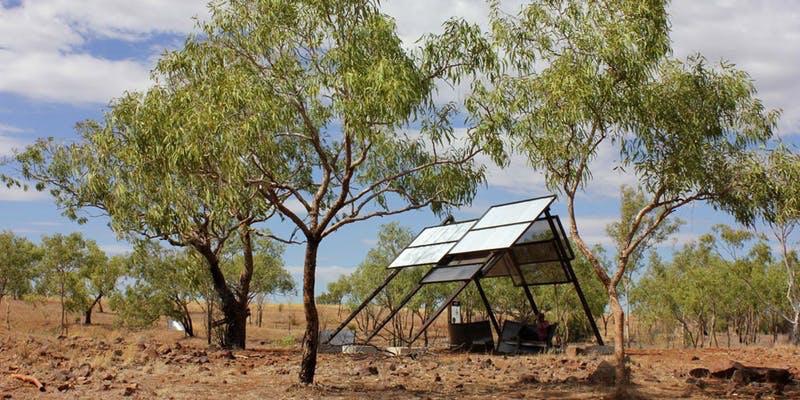Retrospective exhibition celebrates collaborative design for communities

For more than a decade, the Bower Studio has linked communities across Australia, Papua New Guinea and Thailand with postgraduate architecture students and staff to codevelop and construct much needed community buildings
For the next four weeks, the Melbourne School of Design will open its doors to give the public access to The Bower Studio Retrospective: 2008-2019, showcasing the studio’s back-catalogue of projects – from the media box that brought the web to Knuckey’s Lagoon in the Northern Territory, to composting toilets that have promoted better hygiene in Sipaia, Papua New Guinea.
The exhibition will feature a full-scale version of one of these timber-framed and clad composting toilets built by students.
The Bower Studio creator and program coordinator, David O’Brien, said the exhibition gave insight into the value of collaboration to reach short- and long-term community goals.
“Appropriate design is not readily accessible to many people. It’s important that they have access to well-considered design outcomes to suit their cultural needs,” Dr O’Brien said.
The Bower Studio only works in communities when invited by local leaders, and when the community contributes a local workforce.
The project also returns to communities it has worked with in the past and builds on previous projects to grow strong relationships. This ensures strong long-term partnerships that works towards ever-better future improvements.
Dr O’Brien believes there are many benefits for students as they are encouraged to be involved in creating positive impacts for remote communities beyond physical infrastructure.
“Students learn and share in celebrating the local culture which helps them understand the community-building function of architecture,” he said.
“It’s very rewarding to work together to get something built that has tangible value – it’s great for the students to see that what they’re studying can have significant positive social impact.”
The exhibition features multimedia and photographic documentation of previous Bower Studio projects.
Available for interview:
Bower Studio program coordinator Dr David O’Brien; Gurindji traditional owner Rob Roy; Trevor Galgal from Lae in PNG.
Exhibition details:
2 September – 27 September
Dulux Gallery, Ground level, Glyn Davis Building (Melbourne School of Design) The University of Melbourne, Parkville, 3010.